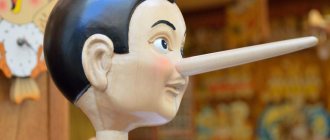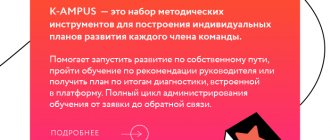With rare exceptions, each of us feels the need for communication, this is how humans are designed. People share information with each other, jointly develop new ideas, get acquainted and start relationships, are charged with positive and negative emotions - all this happens through communication.
Due to the exceptional importance of this process in all areas of life, we are often very upset when they lie to us, and we do not notice it. Probably, learning to recognize a lie, so that it is certain and always is the blue dream of humanity. Unfortunately, this is hardly possible, if only because people often cannot distinguish even their own inventions from reality.
However, in order to suspect something is wrong and keep your ears open, you don’t even need special equipment - during a conversation, it’s enough to pay attention to some indirect signs that your interlocutor involuntarily manifests, which can confirm or refute his words.
A lie, as a rule, is inconvenient for the one who comes up with it. He feels discomfort, nervousness, fear that he may be exposed, even when it concerns something completely harmless. And when we are talking about something serious that can affect a person’s future life, if the truth is revealed, then only a person with good self-control can behave correctly at such moments. But even in this case, if you know what to look for, you can find clear signs indicating a person’s nervousness, as well as in which places in his stories and answers it manifests itself most acutely. Let's look at these signs.
Speech
In our communication, words directly account for 20-40% of the information transmitted, that is, less than half. Everything else is nonverbal (that is, non-verbal) information. Methods of its transmission are studied by such a branch of linguistics as paralinguistics.
Pauses are the most common sign of deception.
They can either be too long or too frequent. The presence of interjections - “um”, “well”, “uh” - also indicates that they may be telling you a lie or not telling you something. An increase in tone is a likely sign. Speech becomes louder and faster, and the person experiences excitement. The reasons may be different - anger, delight, fear. But it could also be a lie.
Useless facts
.
To make a story convincing, people try to saturate their fictional story with real events that are far from the subject of conversation. For example, if you want to find out in detail about the people your interlocutor met, what, for example, he needs to hide, then you will hear detailed micro-stories about how wonderful the food was, the magnificent weather, what emotions were caused by certain everyday events, and about people can only be said in passing. In a word, they will clearly draw a vast background for you, but in the center of the picture they will only sketch a blurry sketch.
.
” You need to make sure that the person answers directly, without necessarily correcting him and thereby putting pressure on him. Remember that a question asked to a question is only an indirect answer. If you asked, “Did you watch TV today?” and were told, “Well, you know I couldn’t do that?” – then you need to understand that this is avoiding a direct answer. Although it should be noted that people can answer this way only because they are offended by a lack of confidence in themselves and do not consider it necessary to answer directly. Another option for an indirect answer is when you are also asked to think out what was said yourself, but are not told directly, for example, to the question “Are you sure you can fix this?” may be followed by the phrase “My friends consider me an excellent master!” From it we can conclude that the person is not confident in his abilities, but he does not want to admit it. As you asked, so they answered you.
Frequent and precise use of phrases from your question, as well as complete repetition of the question before the person begins to answer, may indicate insincerity.
In such situations, your interlocutor does not have time to think of what to answer, so he uses your own words or stalls for time before answering in order to have time to construct a plausible version. An anecdote instead of an answer
.
Pay attention to the “funny” answers. You asked, they answered you wittily, you appreciated it, laughed and moved on to another question, or you didn’t bother bothering this funny interlocutor any more - a common situation. But you need to think about it, if a person often laughs it off instead of answering directly, perhaps he is doing it on purpose. Speech at different speeds
. Frequent coughing, attempts to clear the throat, a sudden change in speech from normal to faster or slower may mean that the person is nervous, perhaps lying. This is also indicated by any objectively unconditional change in the speaker’s voice or tone.
If, during the process of telling a story, a person goes back in the course of the story and adds something to it: he clarifies it, says that he forgot to mention something, adds details, then this indicates a sincere story. It’s difficult to remember a story made up on the fly, add to it in the middle, and then continue to make it up from the end - there is a high probability of getting lost and confused
Facial muscle tension
If you look at your opponent very carefully, you can figure out whether he is cheating or not. It will be revealed by micro-tension of the facial muscles, which lasts for several seconds. No matter how “stony” the interlocutor speaks, instant tension is still inevitable.
The deceiver is revealed not only by the position of the eyes when lying, but also by uncontrolled involuntary movements of the skin and other parts of the face. The most common include: quivering lips, rapid blinking, or changes in skin color.
Body
First of all, you should pay attention to the posture of the interlocutor
“Closed poses” - crossed arms and legs - are well known. They say, at a minimum, that the interlocutor is not very inclined to communicate with you. A person may look relaxed, but attempts to hide his hands, fold them on his chest or lock them on his knees give him away. It’s not a fact that he’s lying to you, but he clearly wants to hide something from you, not to let it slip.
It happens that a liar shrinks, as if he is trying to take up as little space as possible.
Another pose: if a person takes a step back during a conversation, most likely he himself does not believe what he is telling you.
There are “slips in gestures”, a kind of non-verbal leaks of information. Not every liar makes them, but if they happen, it is a reliable sign of his intentions.
If a person touches his face with his hands: scratches his nose, covers his mouth, then these are signs that he is subconsciously closing himself off from you, putting a barrier between you.
The most common gestures of deception:
[/td]
| An involuntary shrug of the shoulders indicates indifference, that the person doesn’t care. And if he twitches one shoulder, it means that he is lying with a very high degree of probability. |
| Rubbing the eyes. When a child does not want to look at something, he covers his eyes with his palms. In an adult, this gesture transforms into rubbing the eye. In this way, the brain tries to block something unpleasant for us (deception, doubt or an unpleasant sight). For men, this is a more pronounced gesture - they rub their eyes, as if a speck has gotten into their eye. For women, this gesture is less noticeable and may well pass for correcting makeup, since ladies usually gently rub their lower eyelid with a finger. But even here you should be careful - suddenly a speck or an eyelash actually got in! |
| Touching the nose (often with a quick, subtle movement) can also be a sign of lying. This gesture is called the “Pinocchio symptom.” Remember the story about Pinocchio, where his nose began to grow rapidly when he lied? In fact, physically this process actually occurs - special substances catelochamines are released in the body, which lead to irritation of the nasal mucosa, pressure also increases, blood flow increases and the nose actually enlarges a little. But this is not noticeable, but it is noticeable how your interlocutor begins to reach for his nose and scratch it. |
| Covering your mouth with your hand or coughing into your fist, according to psychologists, shows a desire to suppress the utterance of your own false words, to prevent them from escaping. |
| Brushing imaginary fluff from clothes . The interlocutor does not approve of what he heard. He doesn't want (or can't) say it out loud, but the gesture betrays his thoughts. |
| Pulling the collar. It's a familiar gesture, isn't it? It’s as if it’s getting stuffy and it’s hard for a person to breathe. Deception leads to increased blood pressure and increased sweating, especially if the deceiver is afraid of being caught in a lie. |
Other deceptive gestures include:
Rubbing your earlobe. Let's get back to our monkeys! This is a “I don’t hear anything” gesture. It is usually accompanied by a glance to the side. Variants of this gesture: rubbing the earlobe, scratching the neck behind the ear, picking (sorry) in the ear or twisting it into a tube. Scratching the neck. Typically, people do this with the index finger of the hand they are writing with. The average person scratches their neck 5 times a day. This gesture means doubt. That is, if a person tells you something like “Yes, yes! I completely agree with you” and at the same time reaches out to scratch his neck, this means that in fact he does not agree and doubts.
Fingers in mouth. The most striking character with a finger in his mouth is Dr. Evil from the film about Austin Powers. He almost always keeps his little finger near his mouth. This is an unconscious attempt by a person to return to a state of security that is usually associated with infancy and sucking on the same pacifier. An adult sucks a cigar, a pipe, glasses, a pen, or chews gum. Most touching of the mouth is associated with deception, but it also indicates that the person needs approval. Perhaps he is lying because he is afraid that you will not like the truth.
Pay attention to such a gesture as the extended middle finger . It can simply lie on the knee, or the person accidentally touches his face with it. This is a gesture of hostility and hidden aggression: the interlocutor seems to send you to hell.
You should also notice if the interlocutor shifts from foot to foot or even takes a small step back. This indicates a desire to leave, to distance themselves from you, so as not to give something away. It is especially important to pay attention to backward movements when asking questions. If the respondent’s head suddenly moves back or down , this may also be an attempt to close himself off.
Body language and posture
People who are far from the world of theatrical art are not able to control the non-verbal language of communication and consciously use it. However, gestures contain certain information that we exchange with our interlocutor. We can say that dialogue always takes place at two levels - the level of speech and the level of non-verbal signs. There are gestures with which we can recognize a lie. A strange look, a turn of the head, a movement of the hand is enough - and now we no longer trust the interlocutor or are wary of him, without even understanding the reason for such a reaction.
Theater courses teach how to consciously manage nonverbal cues and micro-reactions. An actor who has mastered such skills is able, at the level of sensations, to instill in his interlocutor the desired information, to evoke certain emotions: trust and sympathy, danger and hostility.
But it's not that simple. Even the best actor is unable to fully control his nonverbal body language. To achieve the desired effect, through an effort of will, he induces in himself a certain emotional state in which the necessary non-verbal signals appear by themselves. This technique underlies the world-famous Stanislavsky System, which is studied and used by actors to create a stage image.
Emotions
A person's behavior differs dramatically depending on whether he is telling the truth or lying.
If a lie occurs, then the person’s emotions will be much deeper and more sensual. Any lie implies the presence of a certain mask that a person puts on himself and builds an appropriate line of behavior. Often, the “mask” and other emotions are mixed together. For example, a slight smile is a mask of pleasure, if this feeling is not actually experienced, it is mixed with signs of fear, sadness, disgust or anger. In the case of sincere joy, our gaze will see not only a smile, but also the movement of the muscles located around the eyes.
| Asymmetry of facial expression If one side of the face is more contorted than the other, this is a sign of false emotion. During far-fetched experiences, the muscles that cause a smile on one side of the face will contract more strongly. |
Bad reaction
. Monitor the other person's emotions as the conversation progresses. If a person is hiding something from you, then emotions may be expressed late, remain on the person’s face for an unusually long time, and then suddenly disappear, appearing before you finish the phrase. This happens because a person thinks intensely about something of his own, poorly maintains the thread of the conversation and demonstrates emotions that he does not actually feel.
Facial expressions that last 5-10 seconds are usually fake. Most genuine emotions only appear on the face for a few seconds. Otherwise they will look like a mockery. For example, surprise that lasts for more than 5 seconds in a person is a false emotion. A sincere person's words, gestures and facial expressions are synchronized. If someone shouts: “I’m so tired of you!”, and an angry facial expression appears only after the remark, the anger is most likely fake.
American psychologist Paul Ekman studied people's facial expressions and counted a total of 46 independent facial movements. However, he found that in combination with each other they can convey about 7,000 unique emotions! Interestingly, many of the muscles that move the face are not controlled by consciousness. This means that a fake smile will always, albeit slightly, differ from the real one.
Psychology of lies
A liar always understands that he is getting involved in a risky event. Subconsciously, we perceive lying as a crime. And although there is no criminal or administrative liability for everyday lies, the liar is haunted by the fear of exposure. Even if a person doesn’t give a damn about your opinion about him and your attitude towards him, he will in any case subconsciously do two things:
- Try to block the transmission of false information. This can be clearly seen in children's gestures: a child who is lying tries to cover his mouth with his hands.
- Communicate the liar's fear of discovery. A person begins to assess the consequences of exposure when it is inevitable or has already occurred. Until the lie is exposed, even complete impunity in the future will not relieve a person from the fear of being exposed as a lie.
A liar will try to hide his excitement under a mask of false emotions. But the problem is that anxiety has completely physiological forms in the form of increased heart rate, increased sweating, dry mouth - all this is difficult to hide. Another problem is that it is noticeable to others that the emotions are false. A liar can be revealed:
- eyes
- facial expressions
- voice
- speech
- gestures
Let's take a closer look at each point.
Behavior during provocations
Increased breathing, heaving of the chest, frequent swallowing, protruding perspiration - these are signs of strong feelings. It is possible that they are lying to you. Blushing is a sign of embarrassment, but you can also become embarrassed from shame for lying.
Do you like field hockey?
If you try to abruptly change the subject, the person telling the lie will take it with relief and support your initiative, because he understands that the less you talk to him, the less chance he has of “messing up” and giving himself away.
If the interlocutor is sincere, then his natural reaction will be a misunderstanding of the reason for the change of topic, dissatisfaction that his story was not heard to the end. He will try to return to the topic of conversation. I don’t like you guys...
If you have doubts about the veracity of the interlocutor’s words, MirSovetov advises to implicitly show that you do not believe the interlocutor’s story: after his answer to the next question, pause, look closely, with distrust.
If they are not honest with you, it will cause embarrassment and uncertainty. If a person tells the truth, then he often begins to get irritated and stare at you. The following changes can be noted in it: embarrassment disappears, lips compress, eyebrows frown.
Body language and posture
At the beginning of the article we mentioned the children's gesture of covering their mouth with their hands. Of course, adults do not do this, but residual reactions are often observed in them too. For example, light touches to the lips or nose - our subconscious is trying to restrain deceptive speech in this way. A characteristic sign: if a person really has an itchy nose, he will scratch it, but if a person makes this gesture while lying, then he touches his face lightly and abruptly, unreasonably. This is also true for other gestures, for example, when hands are placed near the face to cover a yawn, sneeze or cough. Although, some disguise this gesture with a fake cough.
The ability to gesture correctly while delivering a speech makes it more expressive and helps to hold the attention of the public. At the Benefis theater studio, you will learn to notice other people's nonverbal gestures and consciously control your own. To develop flexibility and mobility of the hands, we use various exercises: “Crocodile”, “Painting the fence”, “Assemble in parts”, “Stroke animals” and other pantomimes. Memorized, mechanical movements have never added persuasiveness to anyone. It’s another matter when certain gestures become a habit and fit organically into the arsenal of expressive means.
Eye movements
It is true that the eyes are the mirror of the soul. A person is designed in such a way that the eyes actively participate in the process of thinking.
They take position depending on which area of the brain is involved at the moment. Knowing this, we can assume what the brain is doing at one time or another in the dialogue: coming up with something new or processing real information.
| Eyes say a lot. For example, if a person looks up to the left when answering a question, he may be making up a false picture of events. If straight to the left, he selects words for the answer. |
If a person confidently wants to defend his lie and lies deliberately, he tries to maintain eye contact. He looks soulfully into your eyes. This is to know if you believe his lies.
And when a person is taken by surprise and wants to lie so that everyone will forget about it, he immediately switches your attention: he goes into another room, supposedly on business, or starts tying his shoes, sorting out papers and muttering something under his breath...
However, sometimes a person looks into the eyes in the hope of seeing support. He may not lie, but he can be very unsure of his rightness.
Watch for blinking. When they lie, they often blink involuntarily, because for many people lying is still stressful. But, in addition, increased blinking may mean that the subject of conversation is unpleasant to him and causes pain. And the less often a person blinks, the happier he is at that moment.
When asking a question, pay attention to the eye movement at the moment when the person answers. When a person is really trying to remember all the details and tell you, they look to the right. When a person comes up with ideas, his gaze goes to the left.
Usually, when a person remembers (comes up with) something, he looks not just to the side, but down (down right, down left)
See a diagram by neurolinguistic psychologists that tells you what eye movements indicate.
Let's imagine that the picture shows the face of your interlocutor. Further, in order to avoid confusion, we will agree to write in relation to you when you look at the “interlocutor’s face”, and in brackets there will be instructions regarding the face depicted in the diagram
You see that the other person's eyes
- They look to the left and up from you (the person looks to the upper right corner), this indicates the construction of the picture.
- To the right and up from you (for him this is the upper left corner) is an appeal to visual memory.
- Look to the left (right side for the interlocutor) - comes up with a sound,
- to the right (for him the left side) - tries to remember what he heard.
- Eyes below and to the left (lower right corner) - checking sensations and feelings.
- Below and to the right (lower left corner) - reflects on the situation, talks to himself.
- If the gaze is direct , then the person perceives information.
For example, if you asked your boss about the salary date, and while answering, he looked down and to the right relative to you, then he thought about it for the first time and is forming an answer “on the fly”, thinking. And if he just turns to the right, it means he’s saying what he heard before from his superiors. Pay attention to this nuance: if you are talking to a left-handed person, then the left and right sides are mirror opposites. This is also true for right-handers, in whom the left hemisphere still predominates over the right, for example, the so-called. retrained lefties.
There is an opinion that a direct look eye to eye symbolizes the sincerity of a person, but if the eyes are averted, then they say that someone is “hiding” his eyes and hiding something. In reality, this is not the case. During a conversation, it is often necessary to break eye contact in order to focus on a thought, think, or remember. Based on materials from bskltd.ru, mirsovetov.ru
Interesting fact:
Scientists from the State University of New York at Buffalo have developed a high-tech polygraph. Based on eye movements, it recognizes when a person is telling the truth and when he is lying. According to the researchers, their system is able to detect false statements with an accuracy of more than 80%.
The new system was tested on volunteers. Before the experiment began, they were asked to guess whether they had stolen a check that was made out to a political party they did not support. An interrogator sat next to the subjects, who first asked questions that were not related to the topic, and then directly asked about “theft.”
At this time, the program, using web cameras, monitored the violation of the trajectory of eye movement, the speed of blinking and the frequency with which the participants in the experiment shifted their gaze. As a result, the system was able to successfully detect lies in 82.2% of cases, while for experienced investigators this rate was about 60%.
How to recognize a lie by facial expressions and gestures:
***
By the way, there is also a category of people who believe in their words so sincerely that they infect other people with their conviction. In a word, such people are born actors.
It should be noted that just as in nature there are no two identical personalities, each person is individual in his own way, so there is no universal set of signals that detect lies. Therefore, all signs must be carefully analyzed in the context of the current situation, and pay attention to both the voice and emotions, and do not forget about body movements. The tongue can lie, but the body cannot lie.
However, be careful and do not make hasty conclusions, no matter how insightful people you are, because even Sherlock Holmes once suspected a girl of a terrible crime, mistaking her awkward gesture for an attempt to hide the truth. Later it turned out that the girl was simply embarrassed about her unpowdered nose :o).
And what do you think,











